Editorial |
by Bill Mousoulis (March 2018) |
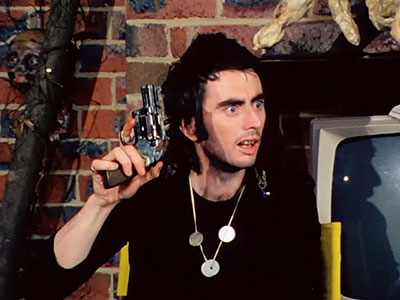 |
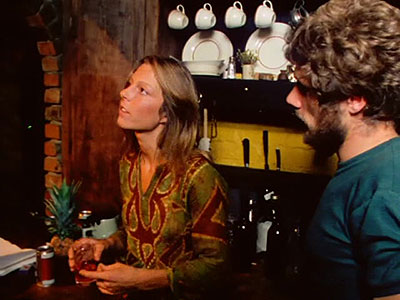 |
Pure Shit (Bert Deling, 1975) |
When things are shit in Australian cinema (2018), we need to take inspiration from a film such as Bert Deling's 1975 masterpiece Pure Shit. It's like a coalescing moment of the furious, virginal period of daring indie filmmaking of the '50s and '60s, from Giorgio Mangiamele to Brian Davies to Peter Tammer to Albie Thoms, in the UBU Group and Melbourne Film-Makers Co-op, and even from the outside of those settings. Bert Deling indeed was a big part of the "Carlton filmmakers" (see Nigel Buesst's essential documentary, Carlton + Godard = Cinema), yet no-one could have probably predicted at the time the unique, visceral concoction that is Pure Shit, as it raucously races outside the known narrative and experimental paradigms of the time. Even given it is a trashy, low-life drug tale ("grunge" in today's language), Pure Shit is probably the free-est film Australian cinema has ever produced. It constantly verges on the edge of collapsing into a meaningless heap, yet flies high with a sublime energy that would have surprised everyone at the time, and which still surprises today. And what is great cinema if not energy, kinetic (Scorsese) or non-kinetic (Bresson)? "The most kinetic Australian film ever made", says Rolf de Heer. Sadly, this sublime kinetic energy that Pure Shit had, it has dissipated with time. It took 20 years to create that energy, and it took 20 years to lose it completely, Australian cinema petering out to mediocrity by the late '90s. There was another film also made in 1975, which also (partly) came from the indie scene of the late '60s, but its roots were elsewhere, and, naturally, the "Australian film renaissance" welcomed it with open arms. It also was an unexpected concoction, but, unlike Pure Shit, it became very influential, slowly infiltrating the Australian cinema landscape, to the point where today it rests like a great template of every commercial film made in this country. Its name is Picnic at Hanging Rock (Peter Weir, 1975). |
 |
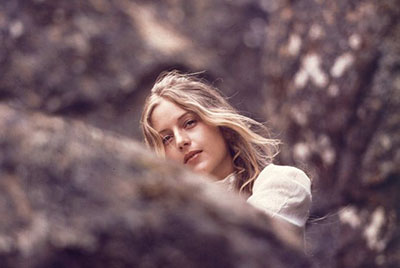 |
Picnic at Hanging Rock (Peter Weir, 1975) |
It's not a bad film, actually. As a narrative it has a richness and mystery that make it attractive and haunting (though Weir would take this further with his subsequent film, The Last Wave, 1977). Formally and stylistically, however, it set a bad example, and commercial Australian cinema never really looked back from that point. It's almost too banal to even say the words - "middle-brow", "middle-class", "cinema of quality", "well crafted". It's the bland, conservative cinema that every country has, Australia isn't the only proponent of it! But Australia has practically sought to exclude other types of cinema from the upper echelons of its industry. As soon as the so-called Renaissance got going, punks like Bert Deling were wilfully excluded, confined to the margins. But the punks continued to make their films anyway. Whilst Australian mainstream cinema has for many years now been conservative and uninspired (and thus not registering on any international scale of quality cinema), I take great heart in the indie/underground cinema Australia has had, and continues to have. And that's what this website is all about. It's about the films and filmmakers that dare to do something different, something "alternative", in this country. Firstly, even though I myself am a narrative filmmaker, I love the experimental filmmakers who have worked in this country. Has there ever been a more outrageous film than Marinetti (Albie Thoms, 1969) made in Australia? He and the other members of the UBU Group rocked things crazily in Sydney, whilst in Melbourne the Cantrills and Dirk de Bruyn and Michael Lee made great films in the early '70s, especially Michael Lee's astonishing The Mystical Rose (1976). |
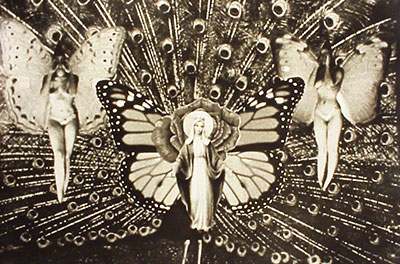 |
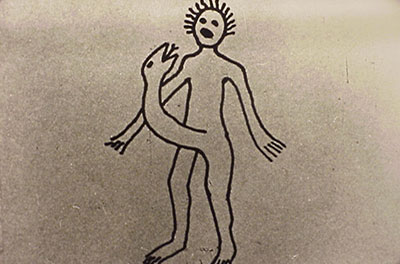 |
The Mystical Rose (Michael Lee, 1976) |
The Mystical Rose is a collage film, featuring both naturalistic footage and animation/experimental sequences, creating a style somewhere between surrealism and psychedelia. It's as strong as Anger and Jacobs. It's got a kick to it. Lee and de Bruyn and Arthur and Corinne Cantrill are great Australian filmmakers, the equal to other experimental filmmakers in the world, if not universally acknowledged as such. Australia has also excelled at feminist filmmaking, and the group of female filmmakers who came out of Sydney from the mid-'70s onwards, canvassing feminist themes, will always have my utmost love and respect. Jeni Thornley, Martha Ansara, Margot Nash, Megan McMurchy, the list goes on. One of the first feminist films was the great "Fuck you" statement of We Aim to Please by Margot Nash and Robin Laurie in 1976. A cheeky performance piece, it spelt it all out, clearly, Feminism 101 style, leaving no-one in doubt about concepts such as the male gaze or the objectification of women. |
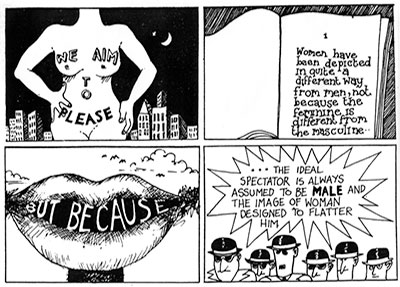 |
 |
We Aim to Please (Margot Nash & Robin Laurie, 1976) |
From there, the feminist films got more complex, and just as valuable. Documentaries and also essay films flourished, creating a body of feminist cinema, again, like experimental cinema, of world standard. And Margot Nash, pictured in the still above, is still making films now, 40 years later. Speaking of essay films, this is another genre where Australian cinema has excelled, though probably not to the world standard levels of Marker or Mulvey, etc. It's actually more a cross-over of genres - feminism with essay (Serious Undertakings, Helen Grace, 1983), documentary with essay (Wild, Ross Gibson, 1992), autobiography with essay (The Butler, Anna Kannava, 1997). I still marvel at the bravery of the early '90s period, when the Australian Film Commission intentionally funded a series of feature films, essay type films, that will never be funded again by an organisation such as Screen Australia for example. It was commercial suicide of course, but what a body of work at high production values: The Refracting Glasses (David Perry, 1992), Breathing Under Water (Susan Murphy Dermody, 1992), Dead to the World (Ross Gibson, 1991), What I Have Written (John Hughes, 1995). And, of course, there have been many narrative and documentary films made in Australia by indie/undergound filmmakers that are very worthy films. To continue with the theme of the "crux year" of 1975/76, here are two stills from the film Queensland (John Ruane, 1976), featuring the great John Flaus, in one of the great experimental narrative films made in Australia. |
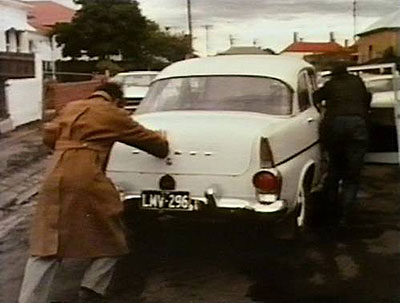 |
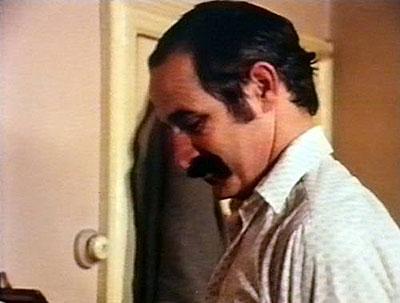 |
Queensland (John Ruane, 1976) |
The problem now, though, going into the late 2010s, is that Australian cinema has ossified. 40 years on from that magical high point of the mid-'70s, Australian cinema, generally speaking (there are always exceptions), is as much of a wasteland as it was in the 1950s, but under the guise of an active, vibrant "industry" of course. Slowly, since about 2000, the heat's gone out of the thing. Conservatism rules, and even the indie/underground scene has faltered. The old guard of radical filmmakers from the '60s and '70s are dying off, a later generation from the '80s and '90s have lost all faith as to their work ever being appreciated again, and the Me Generation of the '00s and '10s show no interest in the art of cinema, just the flash of profile and money. It's a bleak scene. But something can crack. And, at the very least, we can "have a crack". We can express our dissatisfaction. We can make our bizarre films, like Mike Retter's 9:16 work, or Saidin Salkic's self-portraits, or Kim Miles' "punk-up"s. This website is a forum for this. For the radicals. For the yay-saysers of a different kind of cinema than the tepid conservative mainstream cinema Australia currently has. This is for people like the Jeans, to pick a random name: Vigo, Renoir, Eustache, Cocteau. Now that's the shit. |
| Bill Mousoulis is a Greek-Australian independent filmmaker since 1982, and occasional writer on film. |
Published March 27 2018. © Bill Mousoulis 2018
|